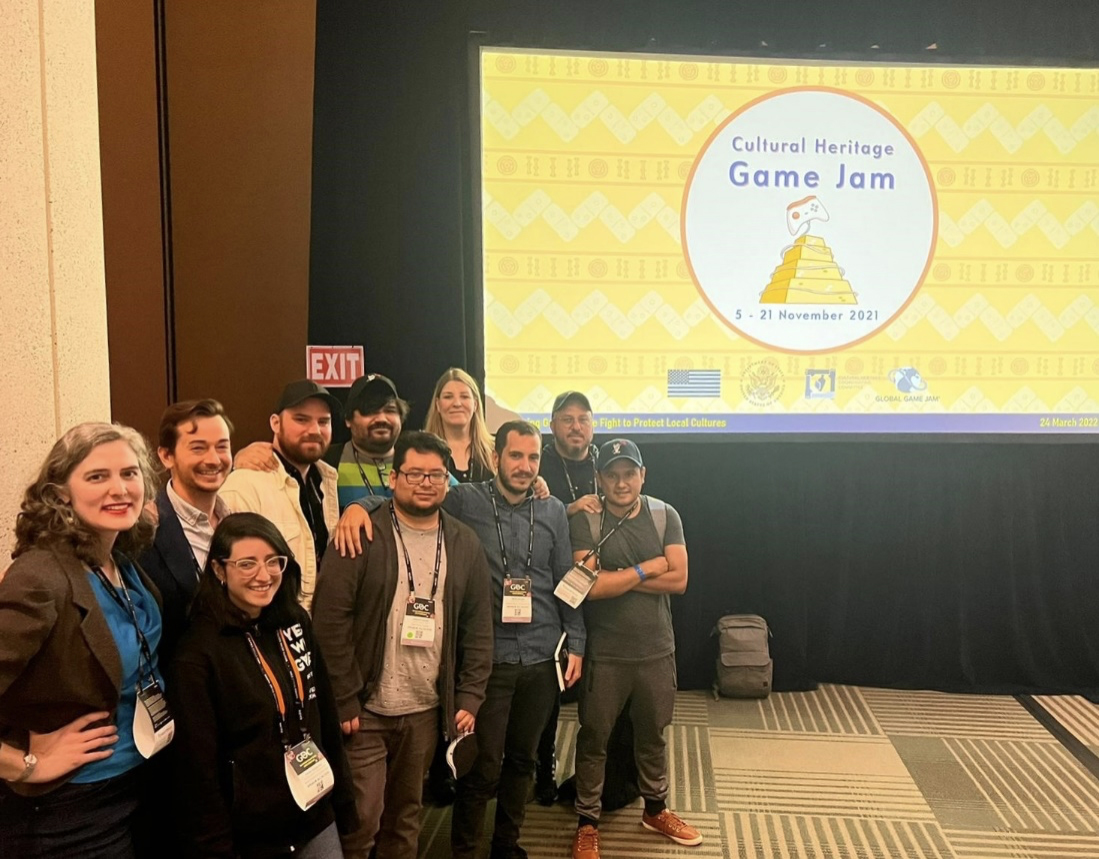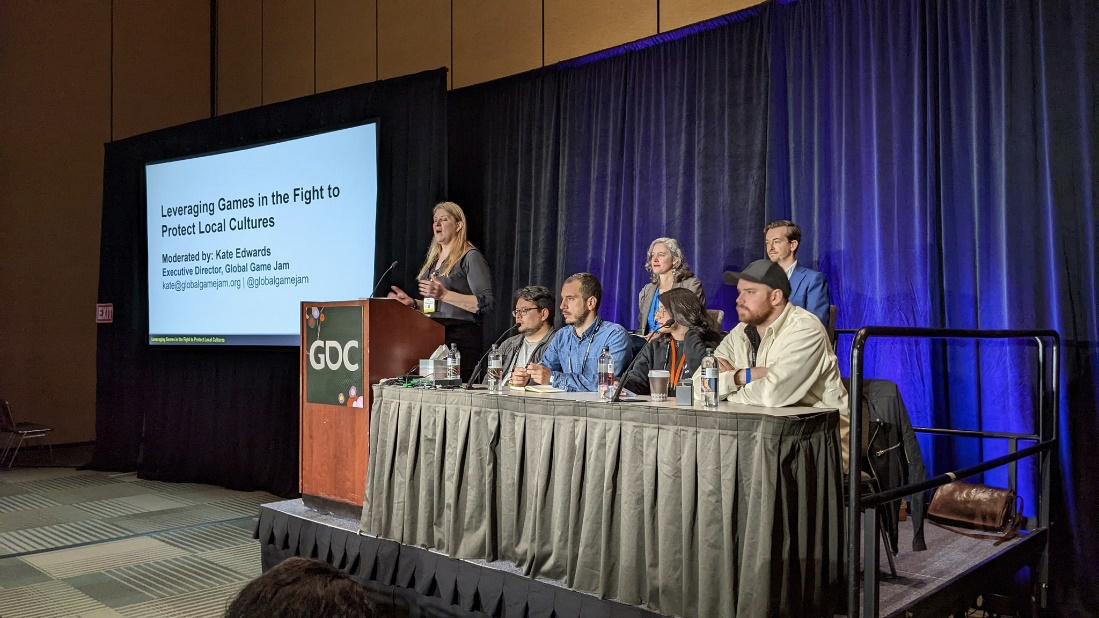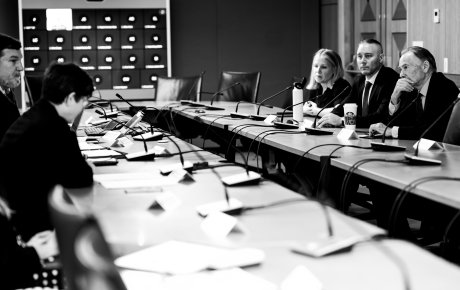purunmachu.jpg
 Panel and “Purunmachu: Whispers of the Chachapoyas” team members
Panel and “Purunmachu: Whispers of the Chachapoyas” team members
During GDC, Kate Edwards, executive director of Global Game Jam explained the concept, saying, “A game jam is an educational exercise where people who love developing games, or want to learn how to develop games, come together and create a game together around a certain theme, whatever that theme might be. And at the end of the jam period, whether it’s a weekend or a couple of weeks or a month, they have a game that they’ve developed together, and they can use that as a portfolio piece or show people ‘Look, here’s my skillset.”’
purunmachu.jpg
 Panel and “Purunmachu: Whispers of the Chachapoyas” team members
Panel and “Purunmachu: Whispers of the Chachapoyas” team members
The team also emphasized the importance of inclusive, representative storytelling to capture nuance. For example, one of the panelists shared that while researching the game’s development, he discovered there are different types and styles of purunmachu, the coffins that hold mummified ancestors of the Chachapoya people. The developers also said that while making the game they gained a new appreciation for the risks to cultural heritage. One of their presentation slides showed a hole punctured into a purunmachu in order to loot its contents.
Catherine Foster, CATF program director, noted during the panel, “By expanding this circle of awareness, those of us who work to preserve cultural heritage – whether governments, civil society, or individuals – gain new allies in the shared responsibility of helping communities safeguard the artifacts, monuments, and practices of their past.”
Want to learn more about the storytelling power of games to celebrate cultural diversity and raise awareness about the threats to heritage? Check out these resources:
- Watch these Instagram story interviews with the “Purunmachu” team and others in the industry @ExchangeOurWorld;
- Play all 116 games submitted to the Cultural Heritage Game Jam; and
- Follow the Cultural Heritage Center on Twitter @HeritageAtState for future updates.
Lastly, at future game jams, consider what stories only you can tell!
About the Cultural Antiquities Task Force
Created by the State Department in 2004 at the direction of Congress, the CATF comprises federal agencies that share a common mission to disrupt cultural property trafficking in the United States and abroad. Since its creation, the CATF has supported more than 100 domestic and international cultural property training programs and supported the repatriation of more than 20,000 pieces to more than 45 countries. CATF is a law enforcement-focused working group of the Cultural Heritage Coordinating Committee. Both are managed by the State Department’s Cultural Heritage Center.



